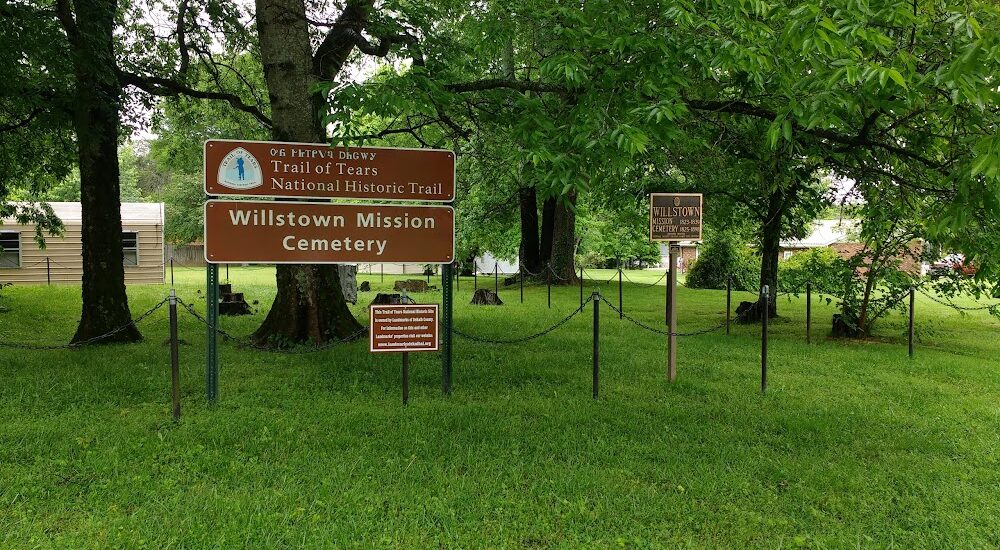Welcome to the Willstown Mission Cemetery, a site that holds the echoes of a bygone era, nestled in the historical landscape of Fort Payne, Alabama. The cemetery dates back to the early 19th century and serves as a poignant reminder of the area’s rich Cherokee heritage and the turbulent times surrounding the Trail of Tears.
In 1823, Cherokee leaders, including the notable John Ross, Andrew Ross, and George Lowery, successfully persuaded the American Board of Commissioners for Foreign Missions to establish a mission and school at this very location. This mission was intended to provide education and religious instruction to the Cherokee people. Among the key figures involved were Reverend Ard Hoyt, Reverend William Chamberlain, and Reverend Daniel Butrick, who dedicated themselves to teaching and supporting the Cherokee community.
Tragically, in 1828, Reverend Ard Hoyt passed away and was buried on the mission grounds, marking the first known grave in what would become the Willstown Mission Cemetery. Although the mission closed prior to the forced removal of the Cherokee in 1838, the cemetery continued to be used. It now contains over 50 graves, including those of eight white settlers from the 19th century. The stories of those buried here, especially the unknown Cherokee individuals, remain largely untold, yet their presence is a stark reminder of the area’s historical significance.
The cemetery is also an integral site on the Trail of Tears National Historic Trail, representing the broader historical context of the forced relocation of the Cherokee people. Although the original mission buildings no longer stand, the site remains a place of reflection, preserving the memory of the lives affected by these historical events.
As you walk through the cemetery, consider the lives of those who once walked these grounds—teachers, students, settlers, and the Cherokee people who faced immense hardships. The Willstown Mission Cemetery is not just a resting place but a silent witness to a significant chapter in American history.






